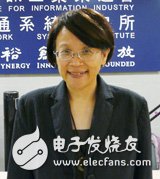Core tip : Money tide is emerging in the Internet of Things application market. In order to seize business opportunities in the Internet of Things, various telecom operators around the world are fully building 3G, 4G and 802.11ac network infrastructure, and further expanding the application market of smart industry, smart energy, smart medical treatment and smart security, etc. The volume of goods rose rapidly, intensifying the market competition.
Business opportunities in the global Internet of Things (IoT) market have exploded. In order to expand revenue sources, various telecom operators are working hard to develop various Internet of Things application markets such as smart industry, smart energy, smart medical care, smart logistics and smart security through wired and wireless network services, while also further driving high efficiency Machine-to-machine (M2M) module demand is rising.
According to the latest report of the MIC ’s latest report, the output value of the global Internet of Things market in 2013 was about US $ 350 billion, and the output value in 2016 is expected to be as high as US $ 600 billion, with a compound annual growth rate of about 16%. In view of the business opportunities of the Internet of Things, we hope to increase its revenue kinetic energy with various online services or customized value-added services.
Revenue kinetic energy telecom business force to build the Internet of Things market

Figure 1 Feng Minghui, Director of the Intelligent Netcom System Research Institute of the China Capital Policy Committee, said that telecom operators are using wired and wireless networks to develop customized IoT application services.
Feng Minghui (Picture 1), director of the Intelligent Netcom System Research Institute of the Information Policy Committee, said that with the growing trend of mobile networking, applications such as network voice and video communication have become more and more popular, impacting telecom operators ’traditional voice services and Newsletters and other major revenue sources have forced telecom operators to provide users with more diversified Internet of Things services to stimulate revenue growth.
In fact, the IoT architecture is divided into a sensing layer, a network layer, and an application layer. Among them, the telecommunications operator is responsible for providing services at the network layer, and collects the network from the IoT application service provider or user with a basic network such as wired or wireless. usage fee.
Feng Minghui further pointed out that because telecommunications operators have the advantages of wired and wireless network infrastructure, and have a large customer base of enterprises and individual users, as long as the Internet of Things applications are integrated with various wireless communication technologies, they can go beyond Markets such as smart buildings, smart lighting, smart grids and smart home appliances, coupled with the support of government policies and funds in various countries, telecommunications operators can easily form alliances with the upstream and downstream supply chains of the Internet of Things to provide users with more convenient applications. service.
It is understood that at present, telecom operators in mainland China, Europe, America, Japan and Taiwan have begun to actively cooperate with M2M module manufacturers and equipment vendors, hoping to seize the huge business opportunities of the Internet of Things. Take Orange, one of Europe ’s three major telecommunications operators, as an example. The company has carried out on-board capital communication with many European car manufacturers based on the Global System for Mobile Communications (GSM) and Global Packet Radio Service (GPRS) network services. The cooperation of the platform has successfully penetrated into the European large freight vehicle management market and currently has more than three million M2M service users.
In addition, Orange also cooperates with M2M module manufacturer Gemalto (Near Field Communication) (NFC) SIM card, and now can provide banks, buses, subways and small and medium-sized stores in France as a simple mobile Payment application.
As for Taiwan, Chunghwa Telecom has also begun to deploy the Internet of Things market in recent years. At present, Chunghwa Telecom is conducting a small-scale trial operation test of smart grid with Taipower, and at the same time, it is carrying out technical cooperation with smart home appliance equipment manufacturers to actively enter the smart home application market.
Feng Minghui believes that in the wave of Internet of Things, the core services of telecom operators have begun to expand from person-to-person communication to machine-to-machine communication. For example, fleet management and mobile payment are obvious examples of cross-industry cooperation between telecom operators. With examples, only in this way can telecom operators' revenue growth be injected with new living water.
On the other hand, various telecom operators have begun to deploy Home Automation (Home AutomaTIon) services, and through the long-term evolution plan (LTE) and 802.11ac and other new generation wireless communication technologies, provide consumers with more convenient smart home services , And expand revenue sources with this new business service.
In this range,including Rotary Switch,Door Switch , Push Button Switch, 303 Cord-Line Switch and so on.
Rotary Switch is mostly used in the cooler area,according to different requirement,many function can be met.For example,4 Position,6 Position,3 Position etc.
High Quality and Reseasonal Price,it is very popular.
Push Switch,Toggle Switches,Led Push Switch,Push Button Switch
Ningbo Kara Electronic Co.,Ltd. , https://www.kara-switch.com